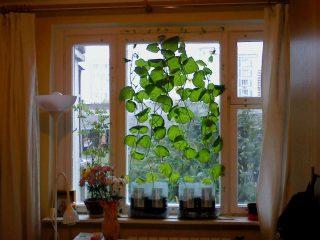One of the most popular and sought-after vegetable crops is cucumber. Questions such as why cucumbers are soft in a greenhouse, or why they turn yellow and don’t grow, are often asked by beginning gardeners. But these are not all the problems that can be encountered while growing this crop.
In order to reap a good and rich harvest, you need to know all the intricacies and features of growing cucumbers in greenhouses. It is worth saying that this vegetable definitely loves warmth and moisture, since it comes from the south. This plant cannot tolerate frost or scorching sun; it is worth taking certain measures to grow it in special climatic conditions. This crop grows wonderfully in greenhouses, and if you follow all the necessary rules, you can harvest the crop all year round. So, initially it is worth knowing that for any plant, the composition of the soil, the method of planting, watering, fertilizing, and also the fight against parasites are primarily important.
Rules for growing cucumbers indoors
The first step is to prepare the soil. A few weeks before planting, the soil is disinfected with copper sulfate, then a mixture of peat, humus and soil is prepared.
It would be good to initially fertilize it with superphosphates, saltpeter and potassium sulfate.
Many experts recommend this particular composition, although soil with pine sawdust has also proven itself to be excellent. Properly prepared soil is the key to a bountiful harvest.
Planting is carried out only with seedlings; it will produce early fruits and will allow you to initially control the established bushes. In the case of sowing seeds, it is quite difficult and labor-intensive to grow a healthy crop in a greenhouse.
As soon as the bushes get stronger, they must initially be provided with support; for this, trellises are installed, to which twine is subsequently attached to entwine and secure the plant stems on it. In the future, it is worth following the rules of watering and timely feeding.
Causes of cucumber disease
Cucumbers can become soft due to the following factors:
- improper watering;
- close fit;
- lack of moisture;
- incorrect temperature conditions;
- fungal infection of the plant;
- planting in close proximity to tomatoes;
- lack of feeding;
- insufficient lighting.
To ensure that the cucumbers are not small, soft and empty, they must be properly watered inside. Namely, it is worth strictly observing the requirement - to water young and adult plants only with settled and warm water.
Watering with cold water can lead to disease and stunting of the bush. Most experts recommend watering in the evening. Watering should be done 2-3 times a week.
Cucumbers become soft and begin to deteriorate over time, that is, to rot and, coming into contact with each other, quickly create an environment for the transfer of bacteria, which will lead to the spread of pathogenic microbes throughout all the beds. To avoid this, you should initially plant the seedlings at a distance of at least 15-20 cm from each other.
A lack of moisture both in the soil and in the air will cause the fruits to become soft and empty inside. Heat and dry air are the main reason leading to soft cucumbers. You can control air humidity using drip irrigation, as well as regular ventilation of the greenhouse. In order for the soil to breathe and be enriched with oxygen, its top layer must be constantly loosened.
An inconsistency in the temperature regime during cultivation can lead to plant disease, and in some cases, to its death.
For this vegetable crop, the optimal temperature is 18-19 °C.
A fungal disease detected in time will help stop further development and infection of other bushes. It is worth carrying out preventive inspections for the presence of rottenness, discoloration, and the appearance of pests.
One of the common mistakes many vegetable growers make is growing cucumbers in the same greenhouse as tomatoes. The problem is that some vegetables require one temperature regime and air humidity, while others require another.
Tomatoes love dry air, but this can cause cucumbers to turn yellow, become soft and stop growing. Recommended neighbors for cucumbers, Chinese cabbage, lettuce and onions.
If you feed the plants correctly and on time, the harvest will be good and generous. Feed the bushes at least 5 times per season.Basically, an organic substrate or mineral fertilizers specifically designed for this crop are used for this.
Quite often, when plants reach great heights, they create a dome from their leaves and stems; this occurs due to improperly installed support. In this regard, the lower fruits begin to hurt.
Conclusion
As you can see, there may be several reasons why fruits lose their density. It is important to comply with the basic requirements for growing this plant, and then all your work and efforts will be generously rewarded with a rich harvest.












